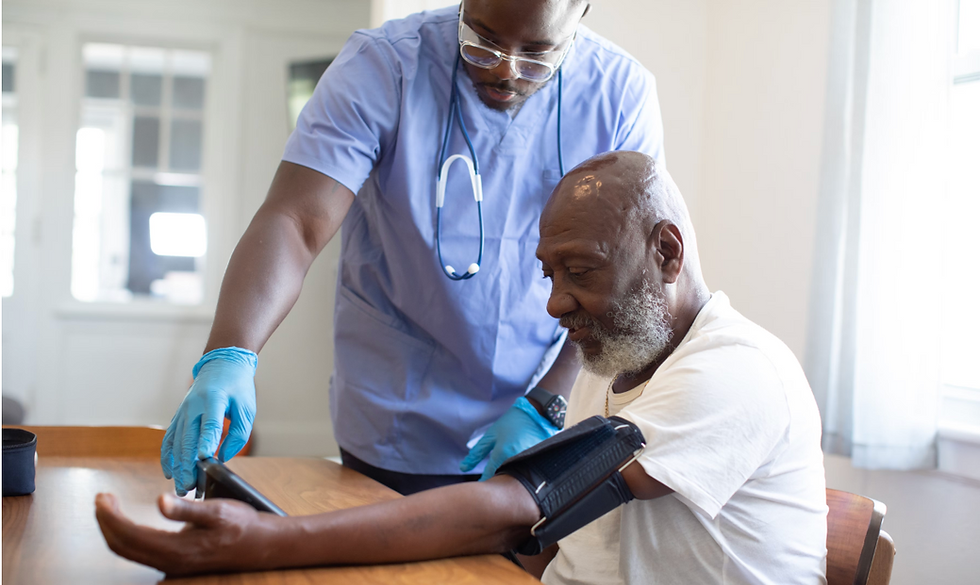Medical Imaging Professionals pt. 2
- Kasey Nunally
- Nov 7, 2022
- 3 min read

This is part two of the discussion on medical imaging professionals. With an emphasis on the various career path options discussed before, the time has come for a closer look at some of the different healthcare positions that also utilize medical imaging techniques daily. People within these professions may also have a background in radiography but there are several specialized educational programs for these jobs, so it is not necessarily required. The professions included in discussion today will be nuclear medicine and ultrasound technologist.
Nuclear Medicine is a medical specialty that uses radioactive tracers (radiopharmaceuticals) to assess bodily functions and to diagnose and treat disease. Specially designed cameras allow doctors to track the path of these radioactive tracers. Single Photon Emission Computed Tomography or SPECT and Positron Emission Tomography or PET scans are the two most common imaging modalities in nuclear medicine(NIBIB). Nuclear medicine technologists have also been known to utilize computed tomography and MRI scanning in conjunction with nuclear medicine technology. This technique is commonly referred to as “fusion imaging.” Even though nuclear medicine technologists also work within the radiation field like radiologic technologists, we must take notice that nuclear medicine techs will often attend their own specialized program segregated from radiography. Both programs average about two years in time to completion, therefore, it is not unheard of for technologists to complete both programs. In the medical imaging community holding multiple licenses for different modalities will increase opportunities for the technologists.
Not all medical imaging procedures require the use of radiation. MRI was touched on in the last article for its use of magnetism opposed to the use of X-rays. Another modality to discuss in the matter would be ultrasound also referred to as diagnostic sonography. Ultrasound technique is an imaging method that uses sound waves to produce images of structures within your body (Mayo Clinic). The elimination of radiation to produce images makes it the ideal exam for visualizing the fetus in a mothers womb. Diagnostic sonography also allows physicians to better visualize soft tissue and vascular structures compared to X-Ray, while also being more flexible than MRI in terms of freedom of movement or mobility in healthcare settings. Just like nuclear medicine people will find that diagnostic sonography tends to fall into its own separate group with different educational programs and career paths. Of course, it is still common to find technologists who become certified in radiography and sonography as some physicians, especially those in the realm of pain management, will opt for both modalities simultaneously during select procedures.
As of May of 2021, the labor statistics bureau concluded that there are about three hundred thousand healthcare workers within the fields of radiography, nuclear medicine, and sonography. At a growth rate between 1-2 percent per year you can begin to imagine the number of workers who may need assistance when keeping track of compliance of various certifications. Medical imaging is an environment riddled with change so to keep healthcare workers up to date they must undertake continuing education while employed to demonstrate competency within their fields. Allied Help is one organization that is taking a focused approach in assisting healthcare workers pursue their goals with ease. First action of order for Allied Help is to assist healthcare workers with the launch of their digital credential wallet. This wallet allows healthcare workers to upload certifications to their profile unlocking a multitude of benefits for personal or career use. Features will include notifications and reminders of different certification renewal dates as well as requirements needed to fulfill competency tasks. The wallet will also give members the opportunity to share verified licenses with employers, quickly giving them a decisive edge in job seeking opportunities. Healthcare workers are encouraged to visit Allied Help to learn more. Currently the team at Allied Help is working with healthcare professionals on discord to develop features the community desires so further news on development can be found on Allied Helps discord.
References:
Allied help. Allied Help. (n.d.). Retrieved July 27, 2022, from https://alliedhelp.net/
Mayo Foundation for Medical Education and Research. (2022, April 30). Ultrasound. Mayo Clinic. Retrieved August 3, 2022, from https://www.mayoclinic.org/tests-procedures/ultrasound/about/pac-20395177
U.S. Bureau of Labor Statistics. (n.d.). BLS search results. U.S. Bureau of Labor Statistics. Retrieved August 3, 2022, from https://data.bls.gov/search/query/results?cx=013738036195919377644%3A6ih0hfrgl50&q=nuclear%2Bmedicine
U.S. Bureau of Labor Statistics. (2022, March 31). 29-2034 Radiologic Technologists and technicians. U.S. Bureau of Labor Statistics. Retrieved August 3, 2022, from https://www.bls.gov/oes/current/oes292034.htm
U.S. Bureau of Labor Statistics. (2022, March 31). 29-2032 diagnostic medical sonographers. U.S. Bureau of Labor Statistics. Retrieved August 3, 2022, from https://www.bls.gov/oes/current/oes292032.htm
U.S. Department of Health and Human Services. (n.d.). Nuclear medicine. National Institute of Biomedical Imaging and Bioengineering. Retrieved August 3, 2022, from https://www.nibib.nih.gov/science-education/science-topics/nuclear-medicine
_edited.png)



Comments